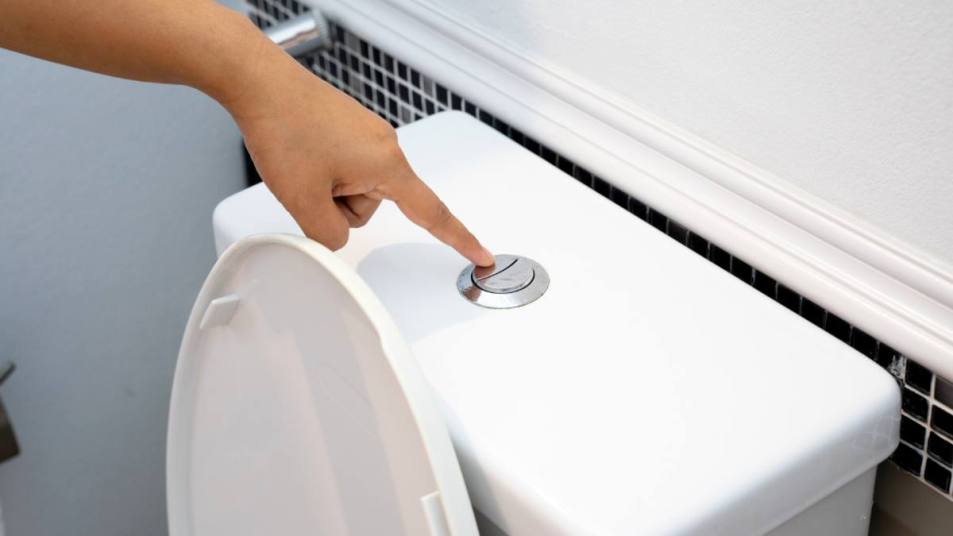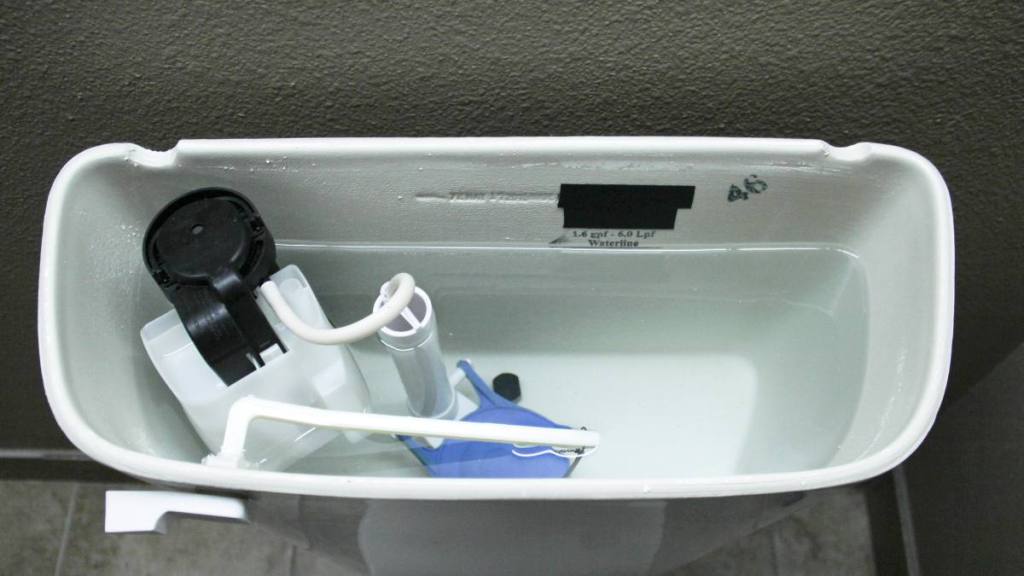How to Clean a Toilet Tank: Plumbers Explain Why It Can Save You From Pricey Repairs
Plus the one thing you should never use

Most of us know to how to scrub a toilet, but did you know the tank — i.e., the back part, where the flushing mechanism is — also needs to be cleaned occasionally? It’s true and doing so can save you from pricey future plumbing bills. Keep scrolling to learn how to clean a toilet tank, why it’s important to do and how to do it with ease.
What happens in a toilet tank?

The tank is the area of the toilet that holds onto the water. When you flush, water rushes quickly from the tank into the bowl, pushing everything down into your home’s plumbing system. The tank then slowly refills with water, which will sit there until the next time you flush.
Because it acts as a reservoir, sediment, minerals and other materials naturally present in your water system can, over time, settle to the bottom of the tank and collect, eventually building up and impeding both how much water the tank can hold, as well as the flushing mechanism. Mold, mildew and bacteria can also thrive in this area.
“That’s why it’s crucial for the longevity of your toilet and the quality of your home’s plumbing to clean the tank about twice a year, and possibly more often if your home has hard water,” says Josh Mitchell, plumbing technician and owner of Plumbinglab.com. “Yet it’s probably one of the most overlooked cleaning tasks!”
Luckily, doing so happens to be extremely easy. Just follow the steps below.
How to clean a toilet tank
Step one: Empty the tank
“While it’s possible to clean the tank without doing this, draining the water makes the job much easier, less messy and gives you more thorough access to all areas,” Mitchell explains.
To do: Simply locate the water valve on the pipe that connects the toilet to the wall and twist it clockwise. This shuts the water off. Now flush the toilet — this will drain water out of the tank, and it won’t refill until you turn the valve back on. Voila! The tank is now ready to be cleaned.
You can watch a demonstration of how to do this, here:
Step two: Gather your cleaning solution
For this, master plumber Matthew Ferris, founder of Ferris Plumbing, recommends using plain, undiluted white vinegar.
“Vinegar is an excellent cleaning solution for this job because the acids help break down mineral deposits, and I’ve repaired plenty of tanks where the flapper had cracked prematurely due to buildup,” he says. “On the other hand, it’s also gentle enough not to damage the flushing mechanism, as long as you rinse it when you’re done.”
No vinegar on-hand? “You can also use hydrogen peroxide, which is another gentle yet effective way to tackle both mineral deposits and grimy gunk like bacteria and mold,” Ferris adds. “A squirt of dish soap can help, too, especially if the tank has any slimy-looking buildup.”
One cleaning solution to skip? Bleach, according to both Ferris and Mitchell, since it can be too harsh on the flushing mechanism. “And definitely don’t combine bleach with any other cleaning solution,” warns Ferris, “as it can create toxic gas when mixed with other common cleaning chemicals, including vinegar and ammonia.”
Step three: Cleaning the tank
First, grab some rubber gloves to protect your hands. To apply the vinegar, simply pour some into the tank or add about a cup to a spray bottle along with a squirt of dish soap and give the inside of the drained tank a thorough spritz. Let the mixture sit for a minimum of ten hours up to overnight to break down any mineral deposits.
Next, gently scrub all the surfaces — from the flushing mechanism to the tank itself — using your regular toilet brush. “You can also use a toothbrush to get into some of the smaller nooks and crannies to be extra thorough — just be gentle. You want to remove grime and deposits, but you don’t want to break anything on the flushing device, either. Let the vinegar do the work!”
Fill a bucket with warm water and slowly pour it into the tank, rinsing all the areas you scrubbed. Don’t overfill! Once you’ve poured in enough water, you can flush the toilet, which will send the vinegar and any gunk you scrubbed off down the drain. Once the toilet is empty again, turn the valve back on — twist counter-clockwise — so the tank fills back up like normal. Replace the lid and you’re done.
You can watch one method, here:
One method to steer clear of when cleaning a toilet tank?
Those premade cleaning tablets or inserts you’re supposed to drop and leave in the tank to slowly dissolve. “These might dye your toilet water a pretty shade of blue and smell nice, but many of these products contain chemicals that will corrode the internal components of your toilet over time, especially rubber seals and gaskets, leading to leaks, which is why most plumbers will tell you to stay away from them.”
How to maintain a clean toilet tank
Emptying and cleaning the tank twice a year will mostly do the job, but to ensure you don’t get too much funk in-between, you can add a cup of vinegar to the (full) tank about once a month or so, suggests Mitchell. Leave it overnight before flushing. This will help make it an unfriendly environment for minerals, bacteria and mold alike.
For more bathroom cleaning hacks, click through the links below!
8 Easy Ways To Make Your Bathroom Smell Good + The TikTok Trick You Should Never Do
5 Easy Bathroom Cleaning Hacks to Remove Mildew, Stop Soap Scum, and More
Put This Cosmetic Staple on Your Bathroom Mirror to Keep It From Fogging Up
















